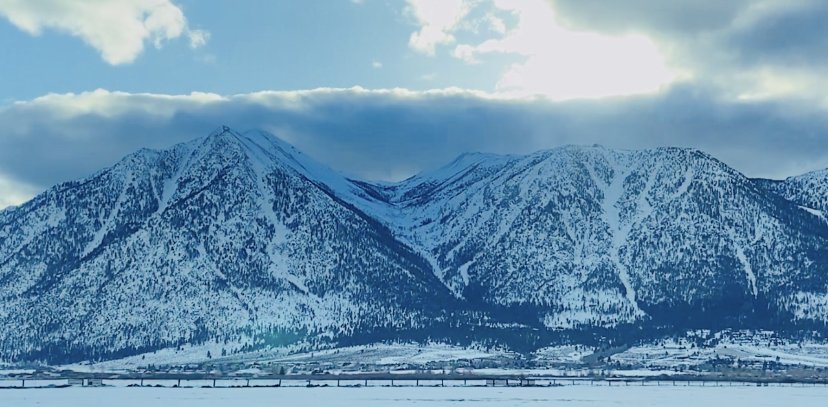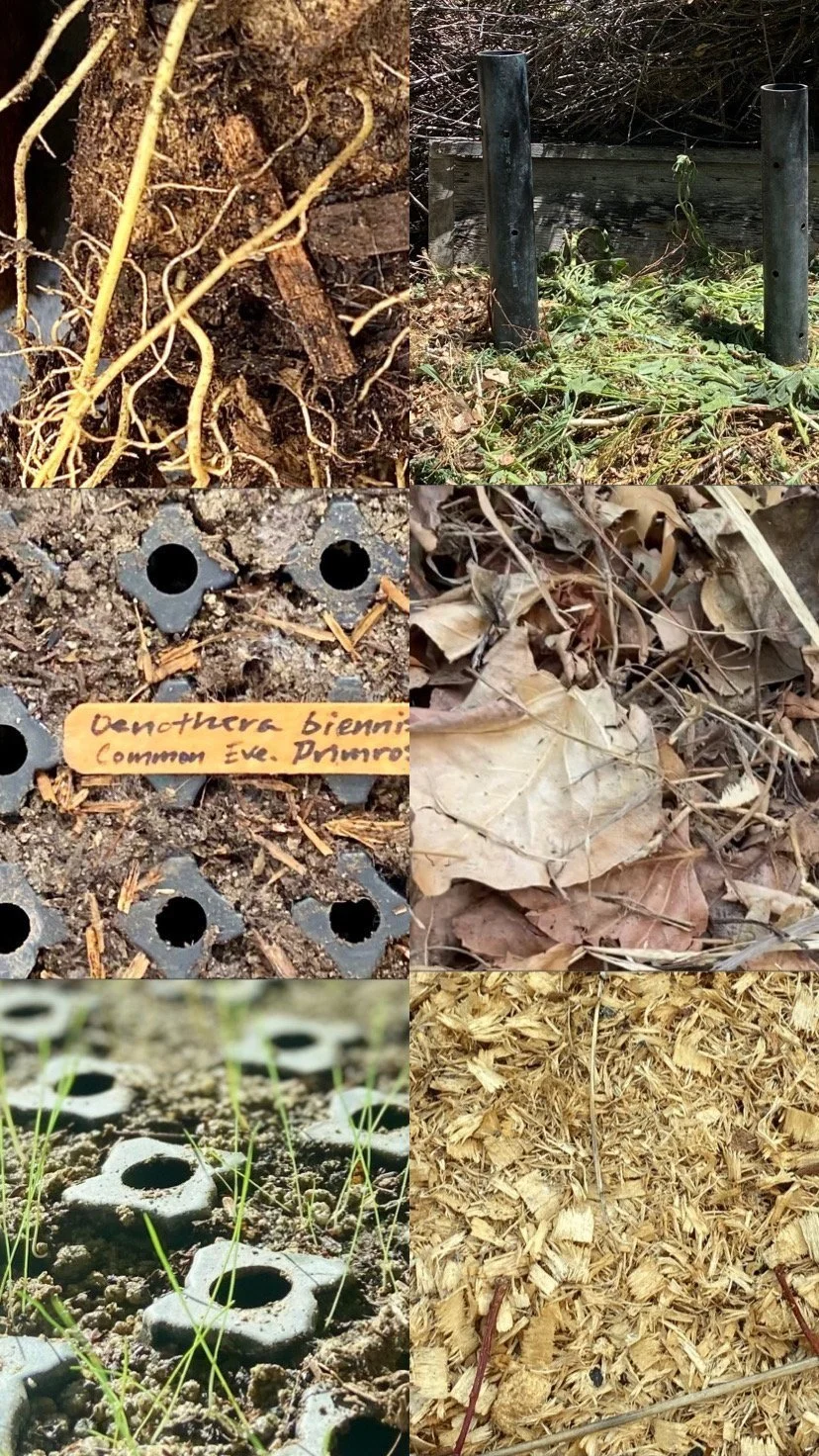Soil First
Tufts of perennials and shrubs of varied heights, is each one, a leaf collector where debris slowly releases their favorite nutrients to the roots.
Clockwise photos from upper-left corner:
strong, deep roots
compost with aeration from pvc piping
seed germination
leave the leaves (stems stay)
native grasses sprouting
mulch layers to minimize evaporation, protect microbes and manage weeds.

Perennial Care
Sleep
Year 1:
For best results, the root system depends on water, soil with good drainage, and a layer of mulch. In our Northern Nevada climate, a drip system is good but in the future for native plants especially the emitter capacity can be reduced and even eliminated.
Otherwise, hose watering is necessary every 2-3 days or even weekly for infant native plants. When deep watering with a hose wait and watch the water move downward, not outward, before starting again. A common mistake is to let the water flow too fast. Shallow watering skates across the surface and doesn’t sink in especially with poor drainage. A plant can die from this, causing the gardener frustration and reevaluation of energy and funds to replace it.
How do we amend soil when we are not to disturb it (no-till)? Mimic mother earth…adding drainage material to the planting hole may be needed but it is best to the “leave the leaves”. Invisible microbes will form and build an efficient underground system that transports water, nutrients and even beings. Create pathways for walking so not to crush these tiny exchange pockets in the planting space.
Establishing young drought tolerant plants means watering deeply and far less than regular plants - every 2 days the first year, then less and less often. Instead of daily watering, drought tolerant plants enjoy a light spray or rinsing off of the dust on their leaves.
Creep
Year 2:
In the Fall before the second year, cover the plants with compost, bark, or rock to make a natural buffer that guards the roots through the winter and reduces water evaporation in the summer. Become accustomed to “leaving” a beautiful layer of fallen leaves, stems and fallen woody material. These all provide various pollinator nesting sites. Educate all around you that this rewilding is providing many homes for pollinators who need the protection and nutrients to make it through the winter. Hopefully, by now, the root system of many of the hardy or native perennials have formed a deep reaching taproot.
Have you ever noticed a young plant not changing its size? If the roots were moist the whole time (spoiled) they stayed put rather than having to work and stretch towards moisture. Did you know watering around the perimeter of the plant rather than near the stem encourages this stretching? In the first and second years, letting the soil dry between watering triggers the roots to stretch…a larger root system = a plant that can achieve its best self.
Imagining the space a perennial will fill and then in real life watching it burst through the soil with new-green foliage and color in the spring or even winter…is a special feat of nature and something to behold.
Plan ahead for the plant’s mature size!
Leap
Year 3:
Finally, leaping upward in the plant’s third season, the plant reaches maturity. This can glean different reactions from the grower - a satisfied well-done! or the plant is “out-of-bounds”! When “out of bounds”, growing like crazy -perhaps over-watered- they may need a better locatin. Perennials are more likely to survive if you move them during the fall to their intended happy place. Otherwise, if the taproot is disturbed too much as it disconnects from the soil, the plant will need constant care and/or still may not survive. Soaking with vitamin B for two days ahead of time will help your success rate. Again, overwatering native perennials in particular provides excessive resources which often as results in the plant stems falling over and needing staking. It cannot be suggested enough that time researching a plant’s correct conditions the first time avoids wasted time, resources, and death.
With patience and respect for the setting a plant prefers, the gardener and tiny pollinator foragers can enjoy cohabiting for years and years to come. Pollinator plants support many species with colors, shapes, and movements we can marvel at, then in return, the pollinators enhance our garden harvests and our personal well being both nutritiously and spiritually.
Ever Changing…
Perennials take 1-3 years to reach maturity. In the first year, the plant appears to sleep - we observe very little growth above ground because the energy is directed to the roots. The second year, the plant appears to creep sideways and the third year, the plant grows upward. Here, an old tree trunk mound was covered with a tarp for one year with only native perennials planted. This video is of the third year.* Cardboard layering makes the turn around faster. I no longer recommend the tarp method. The countless microbes in the soil need oxygen. Cardboard breathes and breaks down quickly when kept moist.
